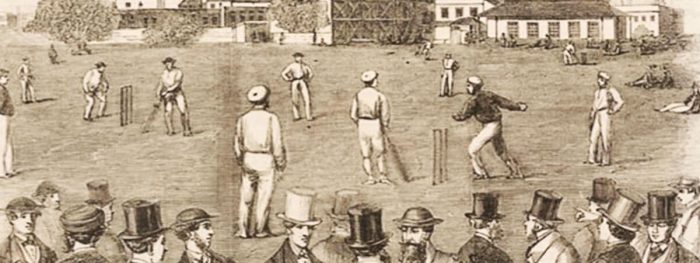Up until 1611, most people considered cricket a children’s game. That year, however, two men were prosecuted for skipping church on a Sunday to play the game. From that point forward, adults took up cricket and never looked back.
As cricket spread to other areas of the world, the love of the sport grew. Today, it is ranked as the second most popular sport internationally, but it has evolved to become much more than just a game. For many, it’s a way of life.
Early Cricket
As the sport adapted to adult play in England, groups began forming teams and clubs based on their location, generally their county. The first official reference to it was in 1709 when a game took place between two teams referred to by their county names.
It is believed that at this point, cricket became much more competitive and not just a fun pastime. A few years later, as aristocrats began playing the game, it became even more commonplace and started to attract press coverage, which, at the same time, was also evolving.

The Laws of the Game
One of the first significant events in the history of cricket that made it more than just a casual game was the development of rules surrounding how it should be played. In 1728, Alan Brodick and the Duke of Richmond came together and drafted the Articles of Agreement.
These articles defined everything surrounding how the game would be played and became the basis of the rules for any game—whether friendly or between counties. By 1744, however, the simple game that had required a reasonable degree of skill (and luck) had evolved to the point where more comprehensive and established rules were needed.
The Laws of Cricket were established, fortifying most portions of the Articles of Agreement but also adding frameworks for umpires and other game features that are common today. These laws were amended in 1774 to include elements like Leg Before Wicket (LBW), only a few years before the Marylebone Cricket Club—which became custodians over the rules—was founded.
After this, cricket transitioned into an official sport in the UK. Global development of the sport, however, occurred during the 19th and 20th centuries.
International Governance
As the game developed, so did international competition. It was introduced into the Olympics in 1896, and countries increasingly began scheduling games against global rivals.
As it grew into an international sport, the need for a governing body to regulate it quickly materialized. In 1909, the Imperial Cricket Conference was founded by representatives from Australia, South Africa, and England—the three most prominent players of the sport.
Regulating all matches between international teams, the body was renamed the International Cricket Council (as it is known today) in 1987. Thanks to the work of the ICC, cricket’s popularity reached new heights.
Part of this work included the formation of a Cricket World Cup. This tournament was first held in England in 1975 and pitted the world’s best teams against each other. With the event causing a global stir, cricket became a lifestyle for many who would spend endless hours watching matches and traveling extensively to ensure they never missed a game.
Industry
With growing fan bases, teams being crowned world champions, and greater reach by the sports thanks to technological breakthroughs, cricket soon changed again. Moving from a game to an industry, cricket equipment, branded apparel, and even team merchandise soon flooded the market.
Accelerated by the national pride of nations, international teams started paying top dollar to attract the best players to the sport. At the same time, countries like India developed leagues like the Indian Premier League.
This league—easily the largest in the world—was valued at $8.4 billion by 2022, jumping to a staggering $10.7 billion in 2023. The revenue generated by such leagues and the industry as a whole has helped contribute significantly to the economies of many regions.
Betting
Apart from the development of the industry, the evolution of the sport also created massive revenue for another industry—sports betting. Gambling on the sport is believed to have occurred as early as 1660, with many placing bets on the outcome of matches even when it was just a simple, friendly game.
Today, cricket betting is a global affair (in markets where it is legal). It is one of the many sports that contributed to the $76.75 billion in revenue generated by sports betting in 2021. Many experts have written a guide that explains how to bet on cricket, while almost every online bookmaker accepts cricket bets. The IPL and ICC Cricket World Cup, in particular, attract massive bets—some breaking records.
Conclusion
What may have started as a simple game among boys hundreds of years ago has undergone multiple evolutions. Adopted by adults, cricket quickly became a formalized sport that spread like wildfire worldwide as many nations fell in love with the simplicity and thrill of the game.
Beyond just a regular sport, cricket has spurned a massive industry responsible for generating billions in revenue annually. Considering the additional revenue it has generated in other sectors, like sports betting, cricket can no longer be considered just a simple game.
Instead, it is a global powerhouse sport with more than 2.5 billion fans watching it annually. With the game more popular now than ever, there is no telling when its evolution will cease.
